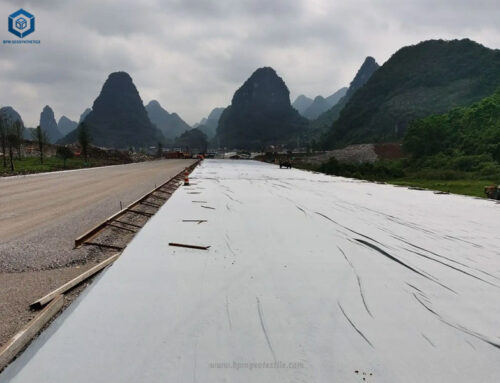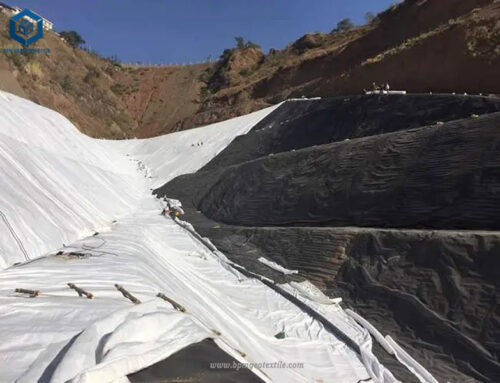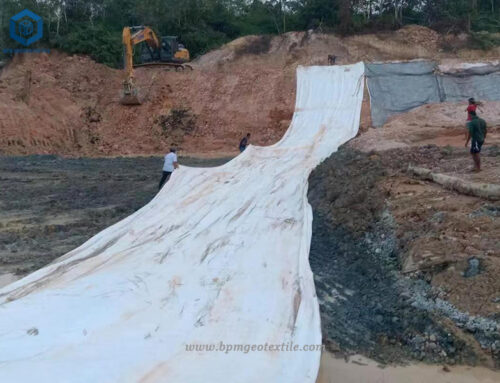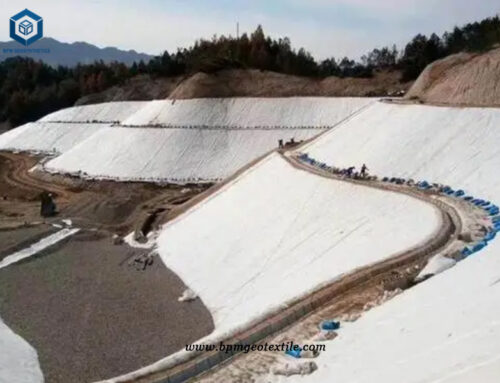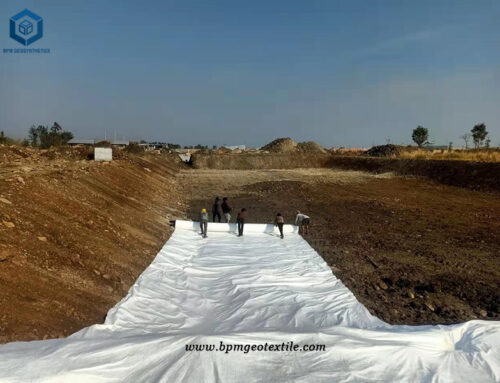Geotextile drainage fabric is a perfect solution for drainage areas which require a tougher, thicker fabric than our standard drainfield fabric.Drainage fabric is robust and durable fabrics designed to increase soil stabilization and ground support in a given location. Typically made from polypropylene fibers, these geotextiles are high in strength to allow for maximum slope support, stabilization and erosion control. BPM non woven geo fabric is made from virgin continuous polyester filament by needle punching and thermally bonding process to form strong fabric that retains its dimensional stability and is resistant to damage from construction stresses. Geotextile fabric can offer optimum performance features including high tensile strength, puncture resistance, perfect acid and alkali resistance, excellent drainage and anti-aging properties etc. It is widely used for separation, filtration, drainage, protection and reinforcement functions in civil environmental engineering and construction projects.
1. What Is Geotextile Drainage Fabric?
Geotextile drainage serves as a specialized construction material that enables efficient drainage. Its primary purpose is to facilitate the passage of water while preventing the accumulation of soil particles that could obstruct the system. This type of fabric is frequently utilized in subsurface drainage systems, including French drains and trench drains, to mitigate soil saturation and protect structures from potential harm. Its permeability and filtration characteristics are essential for ensuring the sustained functionality of the drainage system over time. Geotextile fabric finds widespread application in various construction projects, such as roads, retaining walls, and landscape drainage, as it plays a vital role in managing water flow, preventing erosion, and maintaining overall project stability.
The fabric’s permeability allows water to pass through easily, while its filtration properties prevent clogging of the drainage system by trapping and retaining soil particles. This helps maintain the long-term effectiveness and functionality of the drainage system.
It comes in various options and is used in road construction, retaining walls, and landscape drainage. Geotextile fabric plays a crucial role in managing water flow, preventing erosion, and ensuring project stability.
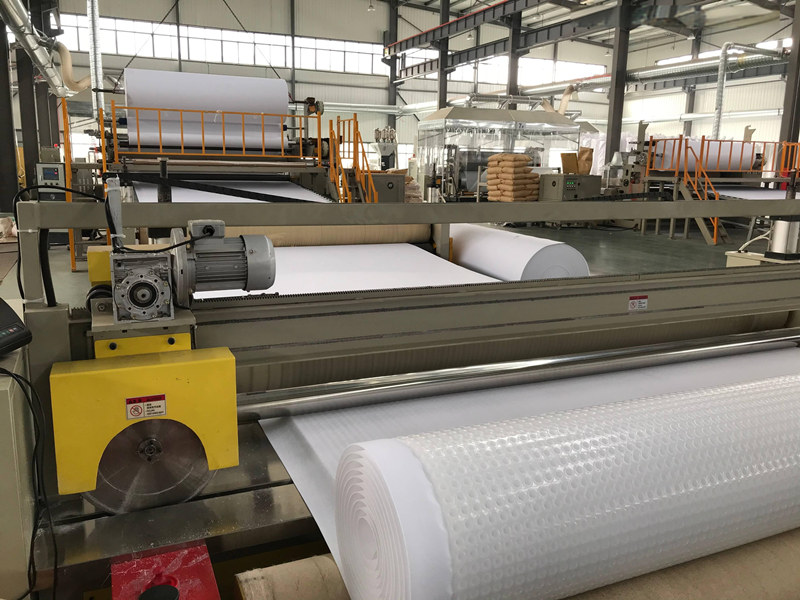
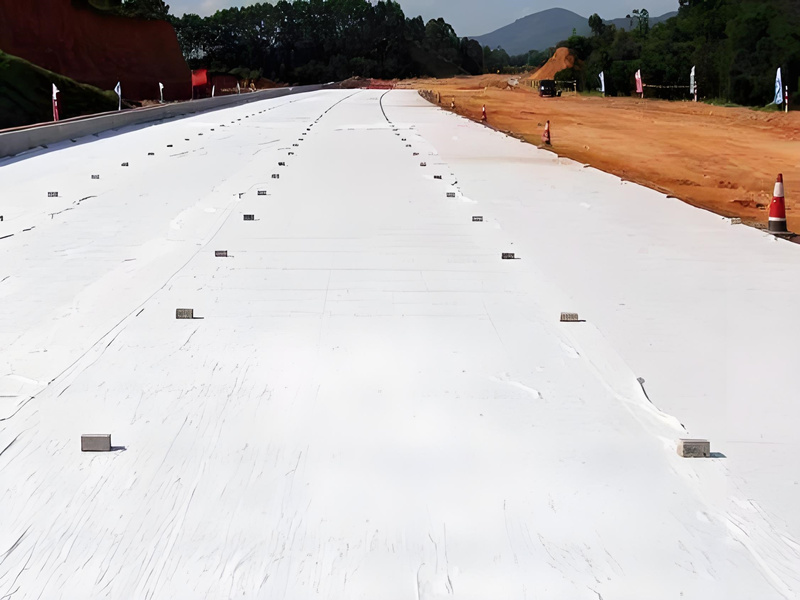
2. What Is Geotextile Drainage Fabric Used for?
Geotextile fabric finds extensive usage across various construction and civil engineering applications. Its primary purpose is to facilitate efficient drainage and prevent soil erosion. Here are some common uses of geotextile fabric:
2.1 Drainage Systems
Geotextile fabric is commonly employed in subsurface drainage systems like French drains and trench drains. It provides a pathway for water to flow away from structures and areas prone to water accumulation, safeguarding against soil saturation and potential damage.
2.2 Road Infrastructure
Drainage fabric is utilized in road construction to enhance road stability and performance. It effectively manages water runoff, reducing the risk of pavement damage and erosion caused by excessive moisture.
2.3 Retaining Walls and Embankments
Drainage fabric is a valuable component in retaining wall and embankment projects. It acts as a barrier between different soil layers, preventing the mixing of fine and coarse particles. This ensures the structural integrity and stability of such constructions.
2.4 Landscape Management
Geotextile fabric plays a vital role in landscaping applications by facilitating water drainage and preventing waterlogging. It helps maintain optimal soil conditions, prevents erosion, and ensures proper water distribution in gardens, parks, and other landscaped areas.
2.5 Sports Field Construction
Geotextile fabric is commonly employed in sports field projects to improve drainage and prevent water accumulation on the playing surface. It helps maintain optimal field conditions and prevents damage caused by excessive moisture.
2.6 Septic Systems
Drainage fabric is utilized in septic systems to aid in the filtration and drainage of wastewater. It prevents clogging and ensures the proper functioning of the system.
3. What Are Features of Geotextile Drainage Fabric?
Geotextile fabric offers several notable characteristics that make it well-suited for a range of drainage applications. Consider the following key features of geotextile drainage fabric:
3.1 Geotextile Drainage Fabric – Excellent Permeability
Geotextile drainage is specifically designed to facilitate easy passage of water. Its high permeability allows for efficient drainage, effectively preventing excessive moisture buildup and minimizing the risk of soil saturation.
3.2 Geotextile Drainage Fabric – Effective Filtration
Acting as a filtration medium, the fabric effectively hinders the movement of fine soil particles while permitting the flow of water. This filtration capability ensures that the drainage system remains unobstructed by retaining soil particles, guaranteeing long-term functionality.
3.3 Geotextile Drainage Fabric – Strength and Durability
Geotextile fabric is engineered to possess sufficient strength and durability to withstand the demands and pressures encountered in construction and drainage applications. Its robust construction ensures long-lasting performance and functionality.
3.4 Chemical Resistance
Geotextile fabric often exhibits resistance to various chemicals commonly found in soil, water, or other environmental conditions. This resistance helps maintain the fabric’s structural integrity and performance even in challenging environments.
3.5 Customizability
Geotextile fabric is available in different thicknesses, strengths, and permeability levels. This versatility allows for customization based on specific project requirements, ensuring optimal performance and compatibility with the intended application.
3.6 Easy Installation
Geotextile fabric is typically lightweight and easy to handle, simplifying the installation process. Its user-friendly nature enables efficient and cost-effective installation procedures.
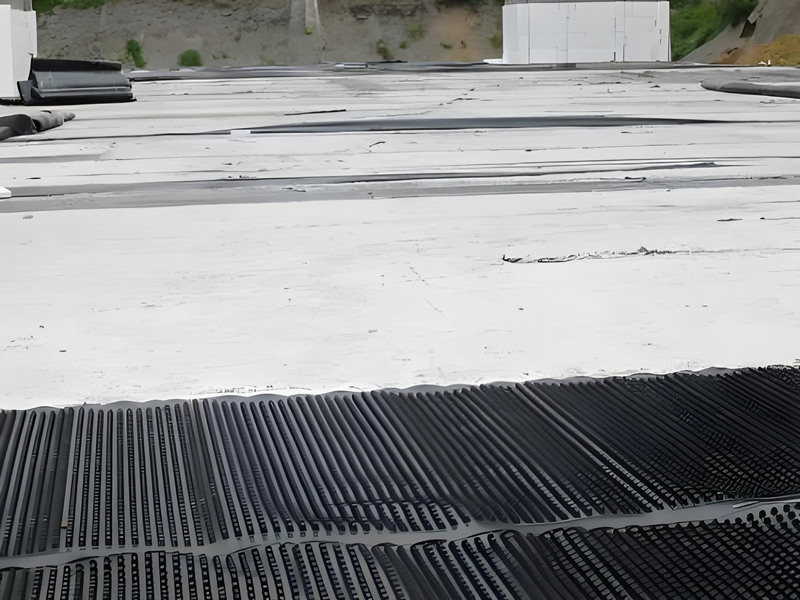
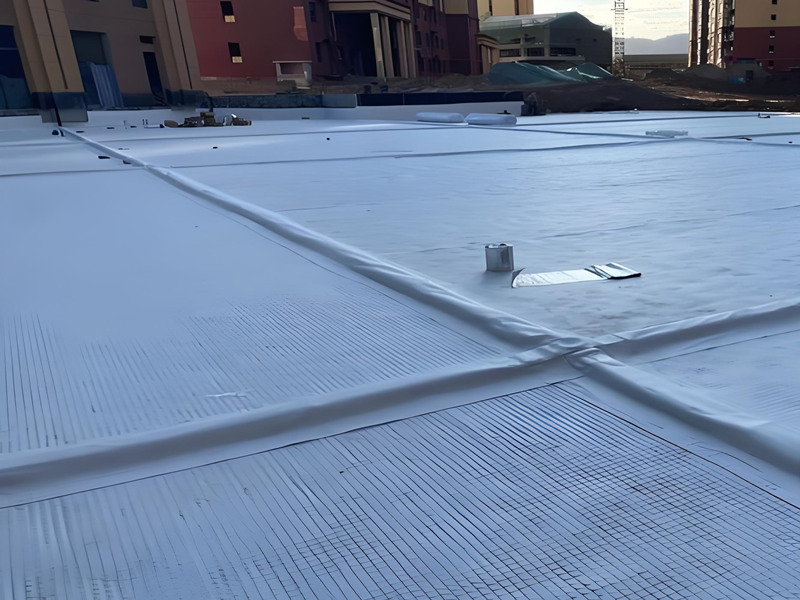
4. Case Study
According to the greening needs of modern cities, green plants are always planted upon the underground garage. The water storage is also essential for plant growing. The moisture proof is also important to underground garage. This seems contradictory. But geotextile fabric with excellent drainage and filtration properties. This drainage fabric has a stable but open structure making it ideal material for drainage liner when constructing underground garage.
Our Chinese customer apply Geotextile fabric for underground garage project. The drainage project requires non woven geo fabric to concrete with different physical properties. They visited the BPM factory to discuss and negotiate cooperation. The Chinese customer was satisfied with BPM geotextile fabric production process, raw materials and product quality. In addition, I recommend ASTM standard and we quoted them very competitive price. Finally, they signed the supply contract and construction service agreement.
The implementation of the geotextile fabric yielded positive results. It effectively drained water, prevented soil erosion, and required minimal maintenance. The system enhanced the user experience by providing a safe and dry parking environment. The project showcased the importance of selecting appropriate drainage solutions to ensure the success of underground construction projects.
5. Summary
BPM had provided many types of effective and states of the art geomembranes, geotextile and other geosynthetics to over 100 countries. Our main customers are from Australia, France, Sweden, UK, Hong Kong, Hungary, New Zealand, Poland, Mexico, Ecuador, Brazil, Pakistan, Bangladesh, Thailand, Vietnam, Malaysia, Indonesia, Singapore, Philippines, Sri Lanka, India, UAE, Saudi Arabia, Qatar, Kenya, Ghana, Ethiopia, Somalia, Nigeria, South Africa, Swaziland, Mongolia etc.
BPM Geotextile is also providing professional design and installation service. OEM and ODM are also available. If you have any questions or inquiries, please contact me, we will reply as soon as possible.

